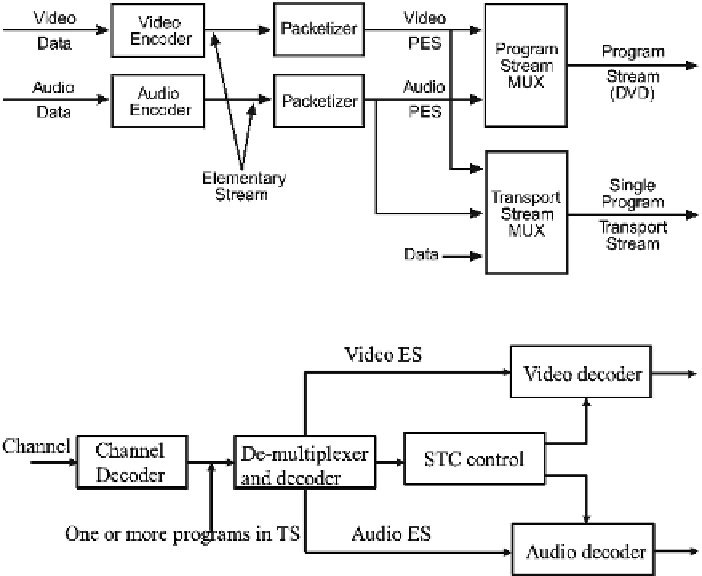Game Development Reference
In-Depth Information
Fig. 9.5
The diagram of multiplex for video and audio
Fig. 9.6
The prototype of the TS decoder
designed for different applications. At the clients, the streams are first de-multiplexed
into individual video and audio element streams, and then the element streams are
further decodedwith their corresponding decoders. Figure
9.6
illustrates the decoding
prototype for TS.
The IEEE Standards organization has also published a comprehensive set of stan-
dards covering the storage and transmission of advanced audio and video coding,
which are used to make audiovisual content be reliably and efficiently coded, dis-
tributed, decoded and presented with high quality. The system standards, e.g., IEEE
Std. 1857.3, provide for the integration of the coded audio and video information,
with tools for precise timing of reproduced audiovisual information, precise synchro-
nization of reproduced audio information with reproduced video information, and
tools to provide metadata, especially metadata for surveillance video. The system
standard defines file format and real-time transport protocol (RTP) (Jacobson et al.
2003
) payload format for IEEE 1857 video and IEEE 1857.2 audio. The storage and
transmission formats are unified in the sense that a conversion from the coded audio
data stream and the coded video data stream, respectively, to a network abstrac-
tion layer (NAL) (Wiegand et al.
2003
) unit stream is performed before the coded
audiovisual content can be encapsulated in media tracks or RTP packets. The ISO

